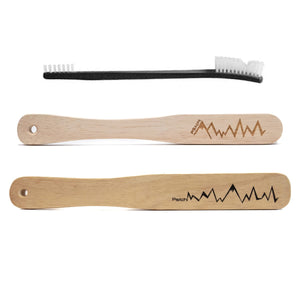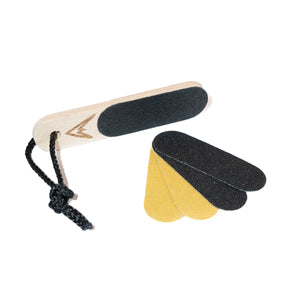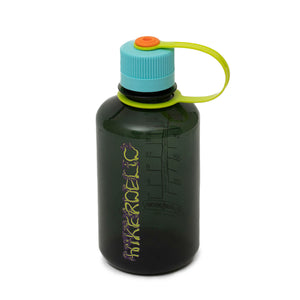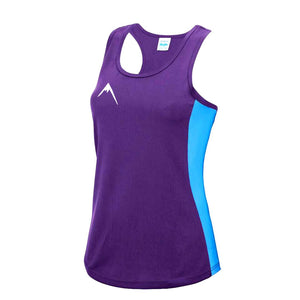7 INTERMEDIATE CLIMBING TECHNIQUES TO LEARN
In part one, we talked about seven basic climbing moves and what we use them for. Now, it’s time to expand the knowledge base a little more with intermediate climbing moves to help you consolidate or even push your grades. With anything, developing skills comes down to practice, failure and repetition, so don’t feel disheartened if you don’t pick it up straight away, I find personally that failure is more of an asset than a problem. In this portion of the knowledge base series, we will be looking at intermediate climbing moves but we will also look more into what our hands as well as what our feet should be doing.
TOE HOOKING
Like a heel hook, toe hooking is there when you need that solid third point of contact gripping a hold or an arete (ridge or corner on rock or artificial walls) but a heel just won’t quite make it there. Ideally used on overhanging or cave like problems, it can be a way to keep you from swinging away wildly, it can also be used as a stabilizer to either give you that little bit of extra security when there is a high potential for ‘barn dooring’ (Swinging off a problem due to poor centre of gravity). It may take some work to get the move down as you do need to have the ability to hold your foot in a rigid position, any give in ankle tension and the move will fail. Remember though, if you overdo it with this move you can hurt yourself, so be careful.
DROP KNEE
Drop knee moves are there to help you stay in a beneficial body position while in a cramped surrounding or where altering foot placement either isn’t possible or comfortable without falling or compromising upper body positioning. A subtle twist of a leg and foot so your knee is pointing downwards or inwards (depending on use) instead up upwards or outwards can increase your range of movement through cramped sections of problems, making reaching for specific holds or moving in directions not afforded by moves like rocking over. A couple of positions that dropping a knee can be helpful is in bridging moves to gain more secure footing or for moving into steeper wall angles without compromising centre of gravity. There are many combinations for this versatile move to both lead into and out of other moves, so experimentation is a must but as with toe hooking, over use can lead to injury; common sense is a must.
DYNAMIC MOVES (DYNOS)
Dynamic moves, simply known and ‘dynos’, are a collection of moves that require a lot of power and hand-eye coordination. Mostly, it’s about confidence and trusting your own abilities. Some bouldering problems will have an area which is too far for you to reach without a non-dynamic move (also known as a static move). In essence, it’s a jumping movement, a lot of the time you will be making that move to positive hand holds and from positive foot holds while indoor climbing but outdoors, it can be anything. The best thing to do when it comes to dynos is practice, the problem is that sometimes your indoor centre may not set many dyno related problems. The best thing you can do is take some finger tape in your bucket and tape some tags on to holds you want to use, this puts you in control of practice sessions and you can always increase difficulty by moving your tags. Remember, though; be aware of the area around you and be sure to let people know you will be dynoing if you feel you may pose a risk to nearby climbers, getting good is important but being safe is always rule one.
CROSSING THROUGH
Imagine you are on the wall, both hands are on holds and you have to traverse right but just moving your right hand first will cause you to slip, overbalance or get lost on the problem and waste energy. The purpose of a cross through is to move a hand that is not in use through the path of the hand in use to reach a hold that requires that specific hand. Usually crossing through is reserved for problems that specifically require the move but as your skill level increases, you may find ways to skip holds or find a more efficient ways to the top.
GASTON
Thoughts of ‘Beauty and the Beast’ references aside, a Gaston is a move where counter pressure is keeping you on the wall by gripping holds with your palms facing outwards and applying pressure. You will start to see this move on the intermediate grades and as the climbs get harder, the holds may get smaller or be spaced further apart. Keeping your core tight here is the secret to success, normally this move will have you on some delicate footing and having your core muscles tight and help you maintain form through tricky sequences.
CRIMPS (OPEN VS CLOSED)
Crimping isn’t difficult to do but there is a little more to it than just grabbing on and hoping for the best, there is strategy and planning involved in a crimp. It’s a showdown between the open hand and the closed hand crimp. Firstly, we can go over the differences and the uses of each.OPEN HAND
The basic crimp, tried and tested and only as strong as your finger strength but only really gets worse to hold as the hold gets thinner.CLOSED HAND
The premise of the closed hand is a simple one, by closing the space between your finger tips and your palm and locking your thumb over your index and middle finger (depending on how long your thumb is) means that not only are you locked on to the hold more but also your thumb will act as extra downforce to help maintain pressure on the crimp itself. The pros of each style are the same, stability. An open-handed crimp is easier, it helps you train your grip strength and is easily adjusted if necessary. Closed hand crimps are for when you need to be locked on to a hold firmly, the immediate drawback is that you cannot really adjust a closed hand crimp without higher risk of coming off the hold entirely or wasting too much energy. The argument between open and closed hand has merit on both sides of the coin, try both, they are both valid and useful variations of crimping with their own specific uses. Personally, I would suggest getting used to open hand crimping and building up grip strength and confidence before becoming too familiar with the closed hand variation. From experience at the walls I have seen people favour closed hand crimps as they are easier to maintain but the drawback is that they do nothing to improve overall grip strength, something an open-handed crimp can do. Use discretion and common sense with this one, knowing when to do one thing or another is better than just doing one thing over and over and expecting different results.
ARETES
A fancy way of saying a corner or edge of a face or wall, the general gist in indoor centres is that if the arete is not in or okay to use on a problem it will be taped off or a note will be put on the starting tags. Think of the arete as a big side pull hold that you can shimmy up when needed, beware though, an arete can have sections where grip is poor due to changing corner angles, paint not being as grippy or its just a really difficult overall angle. With arete climbs, a combination of moves that have been discussed here and in a previous blog
***
By now, you will be making strides and with continued practice and perseverance, these moves will become second nature and with time you will be linking hard moves and refining technique to make your climbing feel and look solid and controlled. Excellent ways to help refine your abilities is to add on exercises that will strengthen your legs, core and flexibility. You can find some tips and information on starting out with a training schedule and how to increase your climbing session difficulty without compromising the fun aspect here. Climb on!
Written by Gerard Savage-West. @climbcentric
BROWSE CLIMBING GEAR FROM PSYCHI
Keep stocked up with climbing chalk, climbing brushes, climbing carabiner or climbing finger tape from Psychi. Our range is affordable and is designed by climbers, for climbers. So check out our range today!




































